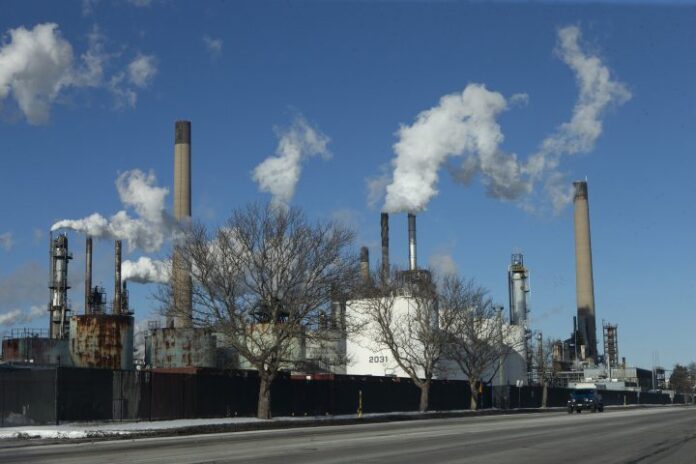Canadian oil producers have some capacity to immediately increase exports to the U.S., industry insiders and analysts say, but anything they can provide in the short-term won’t be enough to fill the gap left behind by Russia.
In the wake of U.S. president Joe Biden’s move on Tuesday to ban the import of Russian energy products, some have called for an increased role for Canadian oil and gas.
In Houston, Texas, where he was attending the international energy conference CERAWeek, Alberta premier Jason Kenney said he was spreading the message that his oil-producing province is ready and willing to help the U.S. fulfil its need for energy.
“Instead of replacing conflict oil from Russia with conflict oil from Saudi, Iran and Venezuela, work with us,” Kenney said on Twitter on Tuesday. “Alberta is the solution.”
In recent days, Kenney has also called on Biden to reinstate the approval of the Keystone XL pipeline project, which Biden cancelled shortly after his inauguration, in order to increase Canadian oil exports to south of the border.
According to figures from the U.S. Energy Information Administration, the United States imported almost 700,000 barrels per day of crude oil and petroleum products from Russia in 2021.
The U.S. imported far more than that from Canada, almost 4.3 million barrels per day.
Tristan Goodman, president of industry group the Explorers and Producers Association of Canada, said this country has the ability to immediately increase that number, either through existing pipeline networks or crude-by-rail shipments.
“There’s an immediate ability to add some degree of production, and I do mean immediate _ weeks to months. It will be a small amount, but it will be noticeable,” Goodman said.
Trending Stories
‘Freedom convoy’ organizer Tamara Lich granted bail
Canada extending mission in Latvia amid NATO effort to deter Russian threat
Russia-Ukraine conflict: U.S. to ban imports of Russian oil, Biden says
However, Goodman said due to under-investment in pipeline infrastructure and the Canadian energy sector as a whole in recent years, the most Canada could expect to supply would be a maximum of 400,000 barrels per day, “if we’re lucky.”
“Can we help? Yes. Will it be the silver bullet to replace the entire production of Russian crude going into the U.S.? No,” he said.
On Tuesday, the White House said it has already committed to releasing more than 90 million barrels from its strategic reserves in the current fiscal year, as well as the emergency sale of 30 million barrels just last week.
Members of the International Energy Agency have also agreed to a collective release of an additional 30 million barrels.
Kevin Birn, a fellow with the Canadian Global Affairs Institute and the chief Canadian oil market analyst for IHS Markit, said the immediate need in the U.S. will likely be filled by inventories, strategic petroleum reserves, and OPEC member nations.
“Canada is able to produce a heck of a lot more oil, but it’s just not going to be able to be the first one to respond to this,” Birn said. “To increase supply on a consistent basis, Canada would need some time.”
Russia-Ukraine conflict: UK to stop importing Russian oil, PM Johnson says
While Canadian oilsands producers have been running at near-capacity so far in 2022, they may look at deferring scheduled maintenance projects this spring in an effort to increase output and capitalize on record high prices, said Richard Masson, executive fellow with the University of Calgary’s School of Public Policy.
“But oilsands projects don’t easily increase production _ it takes time,” Masson said.
Where the industry can move quickly, Masson said, is in the conventional drilling sector. But even there, the significant labour shortage that has been affecting the industry this year may make it hard to staff rigs and quickly drill more wells.
“Practically it’s going to be a real challenge,” he said. “We just don’t have the supply chains to deliver that in a hurry.”
In recent years, oil producers in Canada and around the globe have been razor-focused on paying down debt and increasing dividends to shareholders, and there has been little appetite from investors for major capital projects or industry expansion, Masson added.
“We’ve had a bunch of years where we just haven’t invested a lot, and that’s why the price has been so high, even before (Ukraine),” he said.
“It’s not like there’s a bunch of spare capacity sitting around anywhere, so to just turn on the tap now is going to be really tough.”
— With files from James McCarten in Washington
© 2022 The Canadian Press



